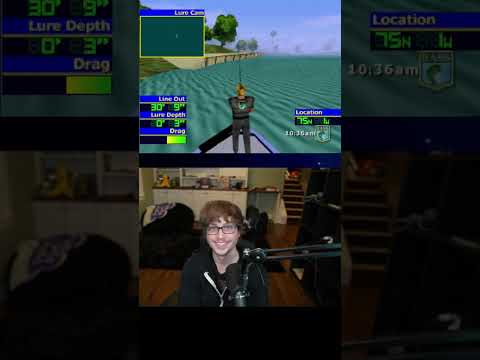In a world where most of gaming history is just a download away, it’s easy to forget how many titles are still functionally lost—games that can’t be emulated well, or at all. Whether it’s due to unique hardware, network dependence, or just technical messiness, these games exist in a frustrating limbo. Not preserved. Not available. And not forgotten.

Here are 12 games you can’t emulate easily—and what makes each one special.
1. Steambot Chronicles (PS2)
Developer: Irem | Released: 2005
A cult sandbox RPG set in a steampunk world full of music, mechs, and moral ambiguity. It’s not broken in emulation—it’s janky. Controls desync. Music bugs out. Textures flicker. It technically runs on PCSX2, but good luck playing it enjoyably from start to finish. And with the sequel (Steambot Chronicles 2) canceled, this remains a one-of-a-kind title, trapped in the mid-2000s.
2. Steel Battalion (Xbox)
Developer: Capcom | Released: 2002
Infamous for its 40-button, 3-pedal custom controller, Steel Battalion was a mech sim designed to punish. If your mech blew up, you lost your save. You cannot emulate this game properly without the original hardware, and modern equivalents don’t exist. It’s less a game and more a piece of performance hardware. Emulators can’t fake that.
3. The Eye of Judgment (PS3)
Developer: SCE Japan | Released: 2007
A bizarre hybrid of card game and augmented reality, this required a PS3 camera, a special mat, and physical cards. Even if you rip the disc and emulate the system, you lose the core mechanic: reading and reacting to real-world inputs. Without the cards and camera, it’s unplayable.
4. Mario Kart Arcade GP (Arcade)
Developer: Namco | Released: 2005
These Namco arcade titles (featuring Pac-Man and Tamagotchi cameos) ran on Triforce hardware, a Nintendo-Sega-Naomi hybrid. Emulation exists through Dolphin Triforce builds, but input lag, networking bugs, and missing camera support make it borderline unplayable as intended. And good luck replicating the cabinet with its steering wheel, camera, and coin-op quirks.
5. Wii Sports (Wii)
Developer: Nintendo | Released: 2006
Sure, technically it runs in Dolphin. But the experience depends on the Wii Remote’s original accelerometer nuance. Modern PC setups with emulated motion controls are inconsistent. Play tennis with a mouse and it becomes a timing game. Play boxing without motion tracking and you lose the point. You can run it, but it’s not the same game.
6. Seaman (Dreamcast)
Developer: Vivarium | Released: 1999
A surreal voice-controlled pet sim where you raise a sarcastic fish with a human face. Even if you emulate the Dreamcast (which works fine), you’re stuck without the custom microphone accessory that plugged into the VMU slot. Fan hacks have tried to substitute input, but there’s no solid way to replicate Seaman’s bizarre conversational AI outside original hardware.
7. Time Crisis Series (PS1–PS3, Arcade)
Developer: Namco | Released: Various
Guncon-based shooters are nearly impossible to replicate cleanly without CRT displays and light guns. Emulating them on modern systems means clunky mouse controls or unreliable camera-based substitutes. The arcade versions are even worse—requiring foot pedals, calibrated sensors, and cabinet timing. Unless you have a full light gun setup or a CRT, these games are ghosts.
8. Alien Front Online (Dreamcast)
Developer: Sega | Released: 2001
One of the first console games with built-in online voice chat, Alien Front Online is a chaotic vehicular combat game that relied on its now-defunct servers. Emulators can run the game, but without online play and voice chat—core parts of the experience—it’s a shell of what it was. Fan servers exist but are unstable and incomplete.
9. Dance Dance Revolution (Arcade/Console)
Developer: Konami | Released: 1998–Present
Yes, you can emulate the game logic and music, but that’s not DDR. Without a proper dance pad with responsive input and low latency, the experience falls apart. Console pads are usually mushy, USB conversions lag, and even commercial stepcharts don’t behave the same. You can simulate it, but not recreate it.
10. Nintendogs (DS)
Developer: Nintendo | Released: 2005
DS emulation has come a long way, but Nintendogs depends on voice recognition, touch screen gestures, and even the DS’s internal clock. Without accurate mic emulation and real-time responsiveness, the pet AI reacts poorly or not at all. You can boot it up and look at the dogs, but training them? Not reliably.
11. Project Milo (Unreleased, Xbox 360 Kinect)
Developer: Lionhead Studios | Demo: 2009
Though it never released, this infamous demo remains a case study in impossible emulation. It used Kinect’s full-body tracking, voice input, AI facial recognition, and dynamic conversation—all tailored to a specific dev kit. Even if it leaked, it wouldn’t run on anything. And even if it did, the tech doesn’t exist anymore.
12. Pac-Man Battle Royale (Arcade)
Developer: Namco Bandai | Released: 2011
A rare arcade-only competitive Pac-Man game, built for up to 4 players at a single cabinet. The emulation community hasn’t cracked this one cleanly. Even if you get the game running, replicating the local multiplayer chaos, screen layout, and controls is clunky and prone to bugs. Unless you find a cabinet, it’s largely inaccessible.
Why This Matters
Emulation is a preservation tool, not just a convenience. These games are historical artifacts—examples of what gaming looked and felt like under different hardware and cultural conditions. When we can’t emulate them well, we don’t just lose access—we lose context.
From niche peripherals to fragile server dependencies, many of these games weren’t built to last. Some relied on unique hardware that’s no longer manufactured. Others depended on online services now long gone. And a few were simply coded in ways modern emulators struggle to interpret.


